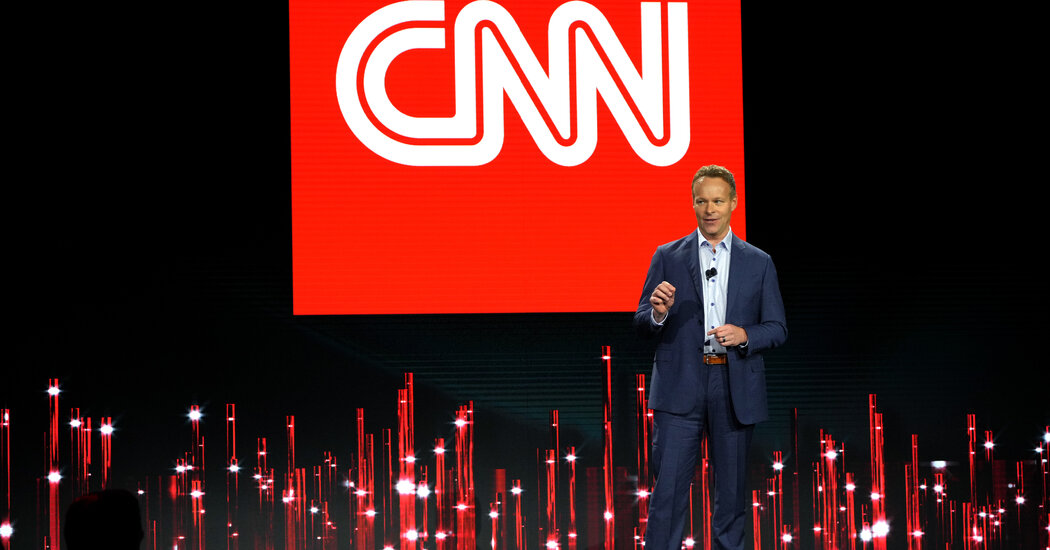Profits Slump at CNN as Ratings Plummet

One of the first moves the newly formed Warner Bros. Discovery made when it took over CNN was shutting down CNN+, the nascent streaming service that was touted as the network’s bridge to the future.
The next month, when Chris Licht took over as CNN’s chairman, he told employees in his first town hall meeting not to worry about ratings, a mainstay of TV news used as a benchmark for revenue and relevance.
Now, three months into Mr. Licht’s tenure, the network finds itself facing big questions about how it can continue to grow its business with its moonshot streaming service dead and the traditional TV business in structural decline.
Projections from S&P Global Market Intelligence say that CNN’s profitability is on pace to decline to $956.8 million this year. That would mark the first time since 2016 that the network has dipped below $1 billion in profit, according to three people familiar with its operations.
Two people familiar with CNN’s operations said that the network’s initial 2022 profitability target was $1.1 billion, which Mr. Licht is on track to miss by more than $100 million. But another person familiar with the matter said that by the accounting of company executives, Mr. Licht is on track to meet a profitability target of roughly $950 million for the year, since the network’s initial budget didn’t account for losses associated with launching the CNN+ streaming service.
However the numbers are crunched, inside CNN the hunt is on for new revenue. To help solve the financial puzzle, Mr. Licht has tapped Chris Marlin, a longtime friend who was recently an executive at the Florida homebuilder Lennar. Mr. Marlin — who some CNN employees have taken to calling “Fish Man,” a takeoff on his surname — had no experience operating a cable news network, having worked at the law firms Foley & Lardner and Holland & Knight.
Mr. Marlin has floated a variety of revenue-generating ideas since joining CNN, including striking advertising deals with major tech companies like Microsoft. Mr. Marlin has also mentioned selling sponsorships to corporate underwriters, extending CNN’s brand in China and expanding CNN Underscored, an e-commerce initiative.
CNN’s parent has also cracked down on expenses. In July, CNN employees received a revised travel and expense policy that, among other things, restricts spending on work celebrations for senior vice presidents and below to $50 per person (“no cap for C.E.O. of W.B.D.,” the policy reads). And Mr. Licht has found ways to make coverage more economical, including a recent decision not to send a U.S.-based special events team to Queen Elizabeth II’s Platinum Jubilee.
Mr. Licht, who took over CNN in May after a corporate merger made Warner Bros. Discovery its parent company, has tried to sell its staff on a vision for the network that isn’t tethered to traditional TV ratings. During a meeting with employees his first week, Mr. Licht said CNN would generate revenue by pitching advertisers on the network’s “pristine brand,” not just sheer audience size, according to a recording of his remarks obtained by The New York Times.
“I don’t want producers making decisions based on what they think will rate,” Mr. Licht said, according to the recording.
A CNN spokesman said that Mr. Licht was also focused on expanding the network’s traditional TV viewership, describing his recommendations to producers as “editorial guidance,” rather than “business strategy.” The spokesman said that Mr. Licht has not yet put his stamp on the network’s programming, adding that Mr. Licht projects the network’s profits will increase in 2023.
Ratings are down from their Trump-era heights across cable news, but declines at CNN are particularly pronounced. The network has drawn an average of 639,000 people in prime time this quarter, according to data from Nielsen, a 27 percent decrease from a year ago. It trails MSNBC, which is down 23 percent in prime time during the same period, and Fox News, where viewership is up about 1 percent.
CNN has spent millions covering the war in Ukraine, according to two people familiar with its operations, and the network is still paying some costs associated with CNN+, such as the salaries of high-profile journalists like Chris Wallace and Audie Cornish, which have also weighed on the bottom line.
The network is trying to defray costs associated with CNN+ by selling some of the programming created for the streaming service to other providers, including HBO Max, which Warner Bros. Discovery also owns.
Executives at CNN’s corporate parent are examining the media empire — which includes the Turner cable networks and channels like Food Network — to find roughly $3 billion in cost savings.
But Mr. Licht told employees at the town hall meeting in May that he didn’t expect Warner Bros. Discovery to impose additional layoffs at CNN after the shutdown of CNN+.
“No one has said to me, ‘You’re going to have to go cut this,’” Mr. Licht said, according to the recording. “I think there’s an acute understanding that they don’t know our business.”
The bulk of CNN’s revenue comes from long-term subscription deals with cable companies and from traditional TV advertising revenue, said Steve Cahall, a senior analyst at Wells Fargo. When those advertisers make spending decisions, they are concerned primarily with total audience size, Mr. Cahall said.
“If the strategy delivers more reach — that is, more ratings — then it’s probably a better business,” he said. “If it delivers less reach — if it turns out that the middle is a narrow place to be these days in America — then it’s a less good business strategy.”
